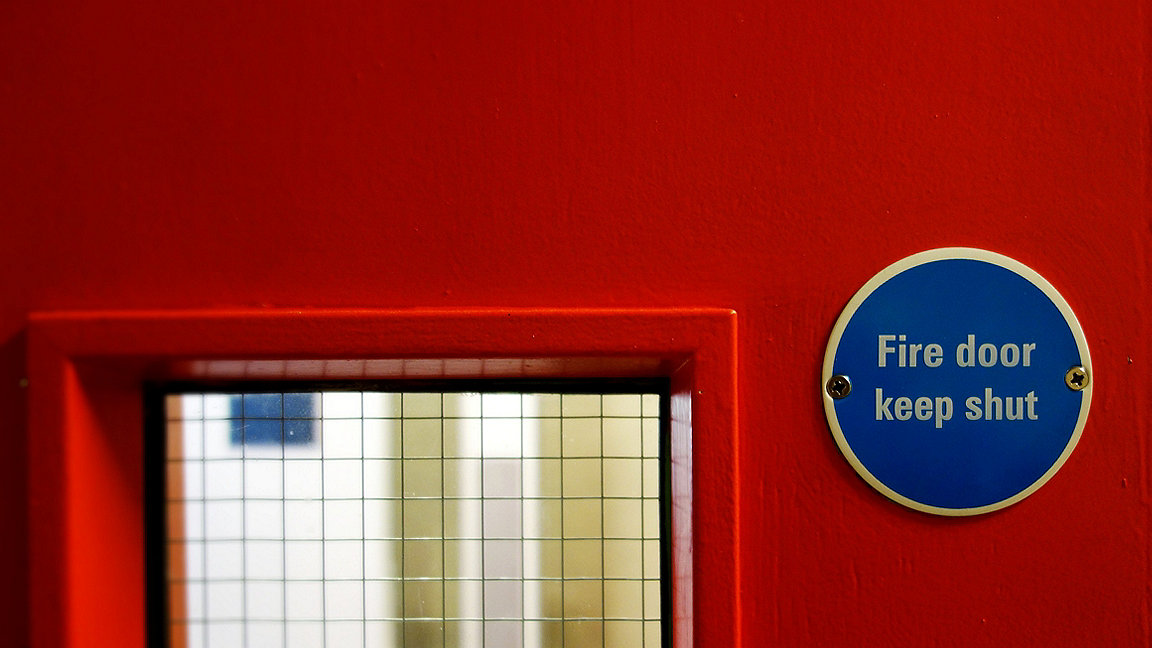
The Fire Safety Act 2021 took effect in May 2022 and will have far-reaching ramifications across the built environment. Ultimately, it will lead to greater scrutiny and safer buildings.
However, an imminent deadline for ensuring fire door safety in smaller residential buildings may have been overlooked by many of those across England who are responsible for undertaking fire risk assessments (FRAs) and up-to-date certifications.
Act offers clarity and imposes new duties
The act clarifies the scope of the Regulatory Reform (Fire Safety) Order 2005 to help improve fire safety in multi-occupancy domestic premises and other buildings.
Crucially, the new legislation clears up confusion over the order's scope for common areas of multi-occupancy residential buildings, confirming that the structure and external walls, including cladding and balconies, and individual flat entrance doors must now be covered by the FRA for the entire property.
New duties will also be imposed on responsible persons – typically landlords, block managers and managing agents – under the Fire Safety (England) Regulations 2022 that take effect on 23 January.
Carrying out FRAs according to the building's height is one such duty. For multi-occupancy residential buildings taller than 18m, or seven storeys or more, the duties include:
-
providing the local fire and rescue service with building plans and details of external wall systems
-
fitting wayfinding signage to support emergency egress and fire service access
-
carrying out monthly checks on evacuation lifts and firefighting lifts
-
installing information boxes on site containing the responsible person's name and contact details along with hard copies of the building plans.
Fire doors in smaller blocks now need assessing
For all residential buildings more than 11m in height, the legislation includes an additional provision where the responsible person must 'undertake quarterly checks on all communal fire doors and make annual checks on flat entrance doors'.
As building surveyors, we have always been aware of the importance of correctly installed and maintained fire doors. Yet occupiers will always regard the entrance doors to their individual flats as their own property, and install such features as letterboxes and cat flaps without considering the consequences. They fail to realise the detrimental impact these actions have on the overall fire safety of the building.
At consultancy Ingleton Wood, we are finding that the new requirement may have slipped under the radar, or been overshadowed by the raft of headline changes affecting high-rise buildings. However, our clients are taking early proactive action – or being honest that they have not been aware of the requirements and listening to our advice – to ensure they properly discharge their duties.
‘Occupiers regard the entrance doors to their individual flats as their own property, and install such features as letterboxes and cat flaps without considering the consequences’
Existing FRAs will not guarantee compliance
Meanwhile, responsible persons under the 2021 Act may also be under the false impression that they comply with the law because they have recently obtained FRAs for their properties.
However, such assessments need constant review, and the process will involve the additional fire door requirements from 23 January. Fulfilling these could be disruptive and costly and entail substantial improvement and upgrade of passive fire measures in buildings.
Entrance doors to individual flats are a vital part of a building's passive fire protection system, and in our opinion should always have been considered as part of the FRA. We are now educating our clients that, because the regulations have changed, so have the FRA requirements.
As a multidisciplinary practice, we undertake fire door surveys in line with either the BM Trada or Fire Door Inspection Scheme checklists, as well as reviewing passive fire protection on compartment lines where an FRA recommends as much.
We are also trying to educate our block management clients to be proactive rather than reactive. While some of them believe such surveys are solely the remit of specialists, building surveyors should also have the core skills to perform these to rigorous standards.
Check now to enable necessary upgrades
In all multi-occupancy residential buildings, the regulations require responsible persons to provide occupants with fire safety instructions and information on the importance of fire doors. The regulations apply to all such existing buildings.
Detailed checks of fire doors in common areas, including individual flats' entrance doors, will be required from 23 January in all multi-occupancy residential buildings more than 11m tall.
In our experience, these checks have so far resulted in the need to replace and upgrade a substantial number of doors. Our advice is to start having the door checks carried out as soon as possible, particularly given the supply chain issues that are leading to delays in the construction sector.
Moreover, block managers should ensure the fire door installer they select has relevant accreditations and can certify the replacement or repaired door on completion.
There is often confusion regarding the level of certification available once the work has been completed. To obtain a full, unqualified certificate you will often need to replace the full door set, including the door leaf, frame and architrave.
Care should also be taken to ensure that the actual door set and ironmongery matches the accompanying third-party accredited certification, as there have been cases of cheap doors being fraudulently supplied using bona fide manufacturers' certificates.
Act promptly or face sanctions
The risk of failing to comply with the new requirements under the 2021 Act is significant. Responsible persons who neglect their duties face hefty fines, possible imprisonment or both.
We are seeing fire officers undertaking spot checks on multi-occupied residential properties and issuing enforcement notices on block managers. The time frames for ensuring compliance are short – so prompt action is required.
'The risk of failing to comply with the new requirements under the 2021 Act is significant'
Scott Barlow MRICS is a director of building surveying at Ingleton Wood
Contact Scott: Email
Related competencies include: Fire safety, Inspection, Legal/regulatory compliance

%20cropped.jpg)